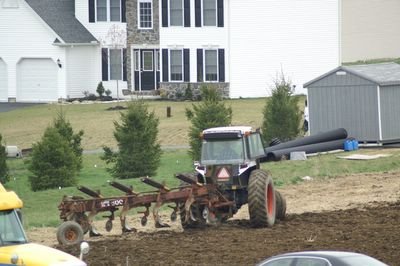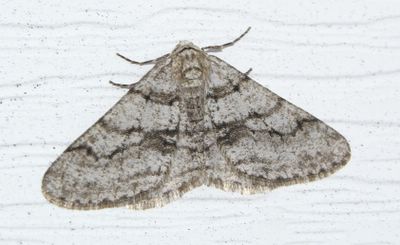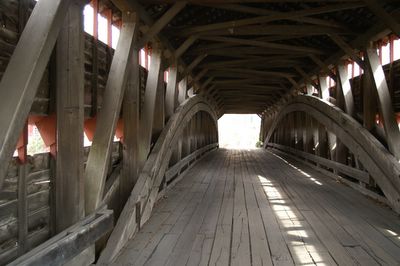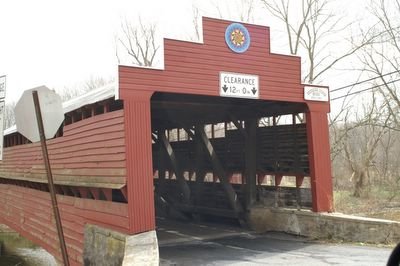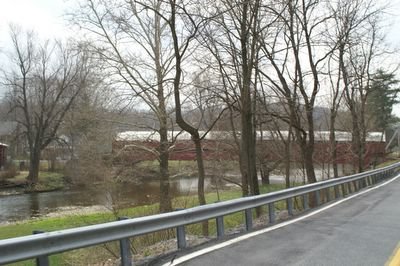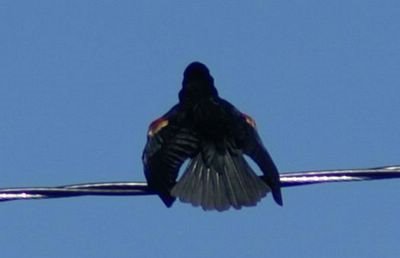
This view shows the redwing with the wings slightly extended. The more the wings extend, the larger the portion of the red and yellow stripes that are exposed. When strolling near a nest in a field, one first hears the bird's cry and the furious beating of the wings; then you see a blur of black with what seems a very large reddish spot atop either wing. At that moment, I have never noticed the yellow stripe below the red as a separate entity. Redwings, in my experience, will attempt to draw your attention away from the nest by flying relatively low and slow and calling loudly. Considering their proclivity for nesting in hayfields, it is marvelous that they persist in significant numbers here on the farm.
